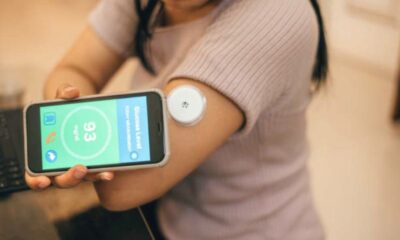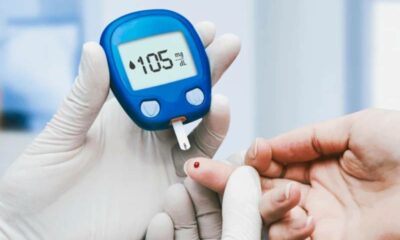Blood sugar monitoring is a cornerstone of diabetes management. It empowers you to understand how your body reacts to food, exercise, and medications, enabling you to make informed decisions about your health. However, consistent and effective monitoring can feel overwhelming at times.
This guide delves into the world of blood sugar monitoring, offering practical tips and techniques to transform it from a chore into a tool for success.
Understanding Blood Sugar Monitoring:
Blood sugar monitoring involves measuring the concentration of glucose (sugar) in your bloodstream. Different methods are available, each with its own advantages and considerations:
- Blood Glucose Meter: The most common method, it uses a finger prick to draw a small blood sample. A test strip inserted into the meter analyzes the blood and displays your blood sugar level.
- Continuous Glucose Monitoring (CGM): A sensor inserted under the skin transmits blood sugar data wirelessly to a receiver or smartphone app, providing a continuous picture of your glucose levels throughout the day.
- Flash Glucose Monitoring (FGM): A newer option, it uses a sensor inserted under the skin. You scan the sensor with a reader or smartphone app to get a blood sugar reading at any time.
Benefits of Effective Blood Sugar Monitoring:
- Improved Blood Sugar Control: Regular monitoring allows you to identify patterns and trends in your blood sugar levels. This empowers you to adjust your diet, exercise, and medications as needed to maintain optimal blood sugar control.
- Reduced Risk of Complications: Chronic high blood sugar levels can lead to serious complications. Monitoring helps you stay within your target range, minimizing the risk of these complications.
- Informed Decision Making: By understanding how your body responds to different factors, you can make informed choices about meals, snacks, activity levels, and medication adjustments.
- Increased Confidence: Monitoring empowers you to take charge of your diabetes management and feel more confident in your ability to stay healthy.
Overcoming Challenges: Making Monitoring Work for You
Blood sugar monitoring can feel like a burden, especially if you struggle with consistency or find the process inconvenient. Here are tips to overcome these challenges:
- Set Realistic Goals: Don’t aim for perfection. Start with a manageable frequency and gradually increase it as you become comfortable.
- Find a Routine that Fits Your Lifestyle: Integrate monitoring into your daily activities. For instance, test before meals or before bedtime.
- Make it Convenient: Keep your monitoring supplies readily available at home, work, and in your bag.
- Use Technology to Your Advantage: Many meters connect to apps that track your readings and provide insights. CGMs and FGMs can significantly reduce finger pricking and streamline the process.
- Reward Yourself: Acknowledge your progress and celebrate milestones. This will help you stay motivated.
Mastering the Technique: Ensuring Accurate Readings
Accurate blood sugar readings are crucial for making informed decisions. Here’s how to ensure accurate monitoring:
- Proper Handwashing: Wash your hands thoroughly with warm water and soap before testing to avoid contamination.
- Choose the Right Fingertip Site: Rotate fingertip sites to prevent callouses and ensure good blood flow.
- Apply the Correct Technique: Use a lancing device to prick the side of your fingertip and gently squeeze to get a sufficient blood sample.
- Read the Test Strip Carefully: Follow the manufacturer’s instructions for applying blood to the test strip and interpreting the results.
- Store Supplies Properly: Store your meter, test strips, and lancets according to the manufacturer’s recommendations to maintain their accuracy.
- Calibrate Your Meter Regularly: Most meters require periodic calibration with a control solution to ensure accuracy.
Beyond the Numbers: Interpreting Your Blood Sugar Readings
Understanding what your blood sugar readings mean is key. Here’s a breakdown:
- Target Ranges: Your doctor will set target ranges for your blood sugar levels based on your individual health and diabetes type.
- Identifying Patterns: Track your readings over time to identify patterns and triggers that affect your blood sugar levels.
- Taking Action: Based on your readings and target ranges, you might need to adjust your diet, exercise, or medication.
Working with Your Doctor: Optimizing Your Monitoring Strategy
Your doctor is your partner in diabetes management. Here’s how to work with them to optimize your blood sugar monitoring:
- Discuss Your Monitoring Goals: Talk to your doctor about your goals for blood sugar control and the frequency of monitoring needed to achieve them.
- Review Your Readings: Share your blood sugar readings with your doctor at appointments. This allows them to assess your progress and make adjustments to your treatment plan if necessary.
Beyond Monitoring: A Holistic Approach to Blood Sugar Control
Blood sugar monitoring is a valuable tool, but it’s just one piece of the puzzle. Here are additional aspects of a holistic approach to diabetes management:
- Healthy Diet: Focus on a balanced diet rich in fruits, vegetables, whole grains, and lean protein. Limit processed foods, sugary drinks, and unhealthy fats. A registered dietitian can create a personalized meal plan to support your blood sugar control.
- Regular Exercise: Physical activity helps your body use insulin more effectively and lowers blood sugar levels. Aim for at least 30 minutes of moderate-intensity exercise most days of the week.
- Weight Management: If you’re overweight or obese, losing even a modest amount of weight can significantly improve insulin sensitivity and blood sugar control.
- Stress Management: Chronic stress can elevate blood sugar levels. Practice relaxation techniques like yoga, meditation, or deep breathing to manage stress effectively.
- Medication Adherence: If prescribed medications, take them exactly as directed by your doctor. Don’t skip or adjust doses without consulting them.
- Regular Checkups: Schedule regular appointments with your doctor to monitor your blood sugar control, check for complications, and update your treatment plan as needed.
Building a Support System: Sharing Your Journey
Living with diabetes can be challenging. Having a support system can make a significant difference. Here’s how to build a support network:
- Family and Friends: Talk to your loved ones about your diabetes and how they can support you.
- Diabetes Support Groups: Connecting with others who understand the challenges of diabetes can be invaluable. Support groups offer encouragement, motivation, and a sense of community.
- Online Resources: Several online resources and communities cater to people with diabetes. They offer information, support, and connect you with others on a similar journey.
Conclusion:
Blood sugar monitoring is a powerful tool for managing diabetes. By implementing the tips and techniques covered in this guide, you can transform monitoring from a chore into a valuable asset for achieving optimal blood sugar control and living a healthy, fulfilling life. Remember, consistency, a positive attitude, and working with your doctor are key to success.

 Diabetology2 weeks ago
Diabetology2 weeks ago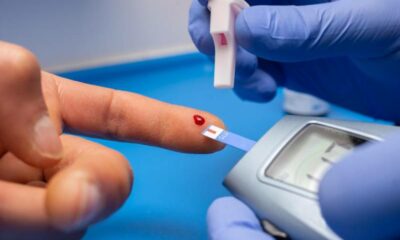
 Diabetology1 week ago
Diabetology1 week ago
 Diabetology5 days ago
Diabetology5 days ago
 Diabetology7 days ago
Diabetology7 days ago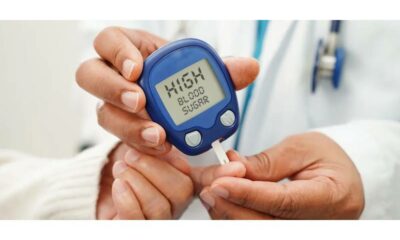
 Diabetology7 days ago
Diabetology7 days ago
 Diabetology3 days ago
Diabetology3 days ago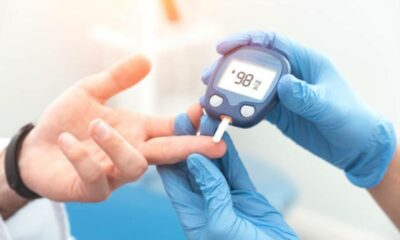
 Diabetology3 days ago
Diabetology3 days ago
 Diabetology1 day ago
Diabetology1 day ago



